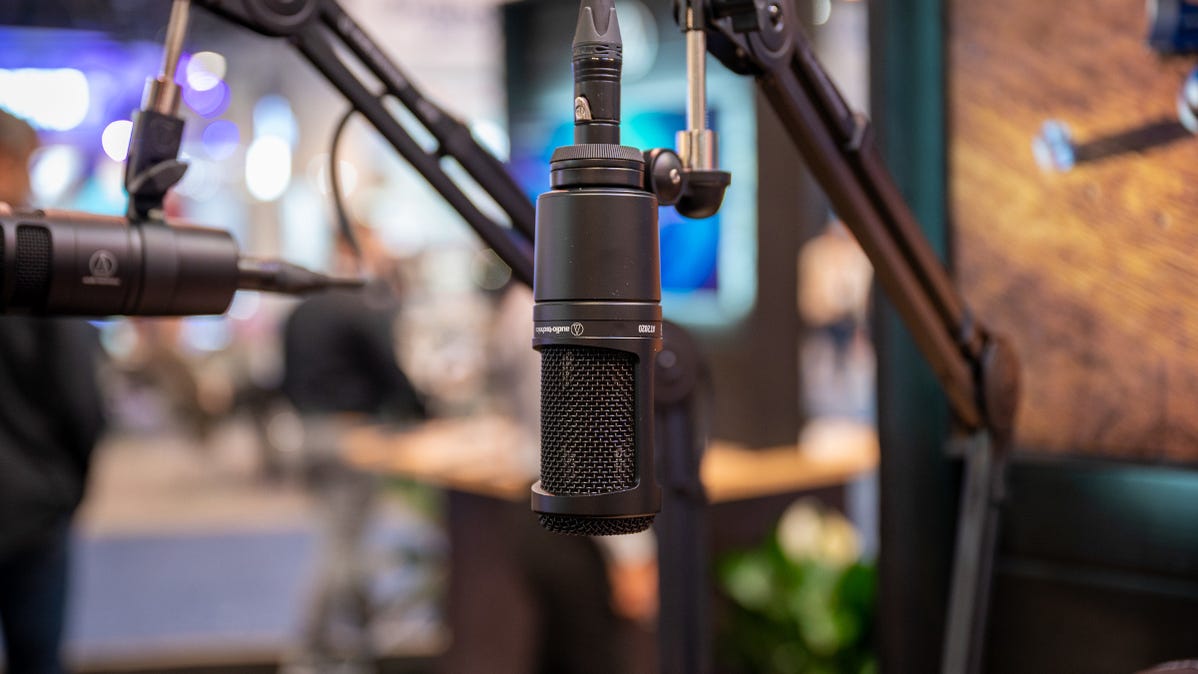
Condenser microphones are typically much more sensitive than other microphones like dynamic microphones. They’re good for capturing detail across the entire range of frequencies but make it much easier to pick up unwanted sounds in the background. For recording instruments, condenser mics are generally more detailed.
Whether you’re a content creator, musician, or producer, a quality microphone can go a long way. People often recommend condenser microphones for accurate recordings, but what are they? How do they compare to other types of mics?
What Is a Condenser Microphone?
A condenser microphone is a type of microphone that is meant to be more sensitive than alternatives like dynamic microphones. This sensitivity means they can pick up much more detail than dynamic microphones in many cases.
There are two types of condenser microphones: large-diaphragm condenser microphones and small-diaphragm condenser microphones. These terms refer to the diaphragm of the microphone, the physical element that actually does the work of picking up sound.
Large-diaphragm condenser microphones typically have a diaphragm around one inch in diameter, or slightly larger or smaller. A large-diaphragm condenser microphone like the Audio-Technica AT4040 doesn’t have as consistent a pickup pattern as mics with smaller diaphragms, but this leads to the “warmth” people talk about with large-diaphragm condenser microphones.
Small-diaphragm condensers like the Lewitt LCT 140 AIR typically have a diaphragm around half an inch or less in size. These don’t have the same low-end response as large-diaphragm condensers, but they’re excellent at high-end detail. They also have great transient response (think sounds like claps).
Regardless of the type of condenser microphone you’re using, the extra sensitivity does have downsides. Mainly, if you’re recording in a less-than-quiet environment (i.e., not a professional recording studio), you’re likely to capture unwanted background noise.
Unlike dynamic microphones, condenser microphones also require an external power source, usually in the form of phantom power. We’ll look at this more in the next section.
How Do Condenser Microphones Work?
Like other microphones, condenser microphones pick up sound as vibrations through the diaphragm. The diaphragm converts this vibration into an electric signal, which then travels through the microphone’s circuitry and through the output.
The diaphragm in a condenser mic is essentially a capacitor, but you don’t need to know much about electricity to understand how it works. In this case, the diaphragm is made of conductive material that sits next to a solid metal plate. As the diaphragm vibrates, this creates a current in the metal plate, creating an audio signal.
This signal is very low level, much more so than the low level signal coming out of a dynamic microphone. It’s also a very high impedance, whereas microphone preamps expect low impedance signals.
Because of this, even though you need to plug the microphone into a preamp, condenser microphones have an additional built-in preamp to raise the level of the output. The preamp requires power, albeit not much.
This is why condenser mics require phantom power, which is a 48V signal sent over the XLR cable from your mixer or preamp into the microphone. USB microphones use power over USB instead of phantom power, while other condenser mics that use vacuum tubes use external power supplies.
Condenser Mics vs. Dynamic Mics: What Are the Differences?
As mentioned above, one of the main differences between condenser microphones and dynamic microphones is the sensitivity. Dynamic microphones aren’t as sensitive, and often don’t capture the full range of frequencies as a condenser microphone. They’re also more prone to self noise and have very low output.
This makes dynamic microphones good for any situation where the source is close to the microphone. For the spoken word, dynamic mics tend to excel as they pick up the voice without picking up the sound of the room. A condenser mic will pick up much more ambience.
Dynamic microphones are also typically much more rugged than condenser mics. This makes them ideal for usage in live music. That lower sensitivity also makes them less prone to feedback, another useful feature in live concerts.
Condenser microphones generally capture a more accurate picture of what you’re recording, but this is both a good thing and a bad thing. Recording a perfectly tuned instrument in a great sounding room, you’ll likely get a much better recording than you would with a dynamic microphone.
Put that same condenser microphone and perfectly tuned instrument in a room with poor acoustic properties, and it will pick up just how bad the room sounds. You need to be much more careful with your environment.
Generally, condenser mics are more suited toward music. If you’re a gamer or content creator, that won’t be of much use to you. Instead, take a look at our roundup of the best gaming microphones.
